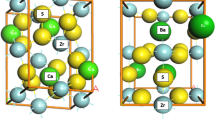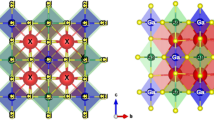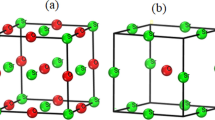Abstract
This work focuses on the electronic, optoelectronic, and nonlinear optical properties of the cyclo[2N]carbon series (C10, C12, C14, C16, C18, C20, C22, and C24), and their derivative systems (C8BN, C10BN, C12BN, C14BN, C16BN, C18BN, C20BN, and C22BN) obtained by functionalizing each molecule of the series with the boron–nitrogen (B–N) binomial. The results were obtained from density functional theory and time-dependent density functional theory at the B3LYP-D3, CAM-B3LYP-D3, and ωB97XD/6–31 + G(d) levels of theory. The study found that the cumulative B–N effects on the molecules studied break the centrosymmetry of these molecules while, lowering the energy gap (from 3.11 eV for C18 to 2.80 eV for its derivative C16BN) making these molecules good materials for electronics. The C2N molecules (2N = 4n), namely C12, C16, C20, and C24, and their derivatives C10BN, C14BN, C18BN, and C22BN, are found to have high chemical softness (s), electronegativity (η), and electrophilic index (ω), making them useful materials in optoelectronics. An impressive impact of the B–N cumulative effect on the cyclo[2N]carbon’s series is that it significantly generates the first-order hyperpolarizability values. Like C24 of which β = 0.00 a.u. and its derivative C22BN of which β = 8812.77 a.u., value 8 times higher than that of paranitroaniline (β = 1072.44 a.u.), which is the reference compound in nonlinear optics, rendering these molecules interesting for linear and non-linear optical applications.








Similar content being viewed by others
References
Kroto HW, Heath JR, O’Brien SC et al (1985) C60: buckminsterfullerene. Nature 318:162–163
Iijima S (1991) Helical microtubules of graphitic carbon. Nature 354:56–58
Novoselov KS, Geim AK, Morozov SV et al (2004) Electric field effect in atomically thin carbon films. Science 306:666–669
Scott LT, Boorum MH, McMahon BJ et al (2002) A rational chemical synthesis of C60. Science 295:1500–1503. https://doi.org/10.1126/science.1068427
Hoffmann R, Kabanov AA, Golov AA, Proserpio DM (2016) Homo citans and carbon allotropes: for an ethics of citation. Angew Chemie Int Ed 55:10962–10976. https://doi.org/10.1002/anie.201600655
Diederich F (1994) Carbon scaffolding: building acetylenic all-carbon and carbon-rich compounds. Nature 369:199–207. https://doi.org/10.1038/369199a0
Kaiser K, Scriven LM, Schulz F et al (2019) An sp-hybridized molecular carbon allotrope, cyclo[18]carbon. Science 365:1299–1301. https://doi.org/10.1126/science.aay1914
Parasuk V, Almlof J, Feyereisen MW (1991) The [18] all-carbon molecule: cumulene or polyacetylene? J Am Chem Soc 113:1049–1050
Torelli T, Mitas L (2000) Electron correlation in C4N+2 carbon rings: aromatic versus dimerized structures. Phys Rev Lett 85:1702–1705. https://doi.org/10.1103/PhysRevLett.85.1702
Arulmozhiraja S, Ohno T (2008) CCSD calculations on C14, C18, and C22 carbon clusters. J Chem Phys. https://doi.org/10.1063/12838200
Diederich F, Rubin Y, Knobler CB et al (1989) All-carbon molecules: evidence for the generation of cyclo[18]carbon from a stable organic precursor. Science 245:1088–1090. https://doi.org/10.1126/science.245.4922.1088
Diederich F, Kivala M (2010) All-carbon scaffolds by rational design. Adv Mater 22:803–812. https://doi.org/10.1002/adma.200902623
Shang L, Kang F, Gao W, Zhou Z (2022) On-surface synthesis of sp -carbon nanostructures. Nanomaterials 12:137
Scriven LM, Kaiser K, Schulz F et al (2020) Synthesis of cyclo[18]carbon via debromination of C18Br 6. J Am Chem Soc 142:12921–12924. https://doi.org/10.1021/jacs.0c05033
Pichierri F (2020) Boron-nitrogen analogues of cyclo[18]carbon. Chem Phys Lett 738:136860. https://doi.org/10.1016/j.cplett.2019.136860
Stasyuk AJ, Stasyuk OA, Solà M, Voityuk AA (2020) cyclo[18]carbon: the smallest all-carbon electron acceptor. Chem Commun 56:352–355. https://doi.org/10.1039/c9cc08399e
Heaton-Burgess T, Yang W (2010) Structural manifestation of the delocalization error of density functional approximations: C4N+2 rings and C20 bowl, cage, and ring isomers. J Chem Phys 132:10–15. https://doi.org/10.1063/1.3445266
Lundberg M, Siegbahn PEM (2005) Quantifying the effects of the self-interaction error in DFT: When do the delocalized states appear? J Chem Phys. https://doi.org/10.1063/11926277
Zheng X, Liu M, Johnson ER et al (2012) Delocalization error of density-functional approximations: a distinct manifestation in hydrogen molecular chains. J Chem Phys. https://doi.org/10.1063/14768673
Liu Z, Lu T, Chen Q (2020) An sp-hybridized all-carboatomic ring, cyclo[18]carbon: electronic structure, electronic spectrum, and optical nonlinearity. Carbon N Y 165:461–467. https://doi.org/10.1016/j.carbon.2020.05.023
Biglari Z, Fallah V (2020) Influence of BN-orientation pattern at spoke location of corannulene on electro-optical properties and aromaticity. J Mol Struct 1220:128730. https://doi.org/10.1016/j.molstruc.2020.128730
Frisch MJEA (2009) Gaussian 09: IOps Reference. Gaussian Wallingford, CT, USA
Becke AD (1992) Density-functional thermochemistry. I. The effect of the exchange-only gradient correction. J Chem Phys 96:2155–2160
Tchangnwa Nya F, Ejuh GW, Ndjaka JMB (2017) Theoretical study of optoelectronic and thermodynamic properties of molecule 4-[2-(2-N, N-dihydroxy amino thiophene) vinyl] benzanamine: influence of hydroxyl position. Mater Lett 202:89–95. https://doi.org/10.1016/j.matlet.2017.05.064
Ejuh GW, Tchangnwa Nya F, Ottou Abe MT et al (2017) Electronic structure, physico–chemical, linear and non linear optical properties analysis of coronene, 6B-, 6N-, 3B3N- substituted C24H12 using RHF, B3LYP and wB97XD methods. Opt Quantum Electron. https://doi.org/10.1007/s11082-017-1221-2
Becke AD (1988) Density-functional exchange-energy approximation with correct asymptotic behavior. Phys Rev A 38:3098
Lee C, Yang W, Parr RG (1988) Development of the colle-salvetti correlation-energy formula into a functional of the electron density. Phys Rev B 37:785
Yanai T, Tew DP, Handy NC (2004) A new hybrid exchange–correlation functional using the Coulomb-attenuating method (CAM-B3LYP). Chem Phys Lett 393:51–57
Chai J-D, Head-Gordon M (2008) Long-range corrected hybrid density functionals with damped atom–atom dispersion corrections. Phys Chem Chem Phys 10:6615–6620
Grimme S, Antony J, Ehrlich S, Krieg H (2010) A consistent and accurate ab initio parametriza-tion of density functional dispersion correction (DFT-D) for the 94 elements H-Pu. J Chem Phys 132(15):154104. https://doi.org/10.1063/1.3382344
Aloumko B, Foadin CST, Ousmanou MB et al (2023) Enhancing the reactivity, electronic, linear and non-linear optical properties of C45H15-like carbon nanocone doped with titanium dioxide, boron, and nitrogen: DFT and TD-DFT study. Phys Scr 98:65916
de Paul ZV, Fouegue ADT, Bouba MO et al (2023) Adsorption of juglone on pure and boron-doped C24 fullerene-like nano-cage: a density functional theory investigation. Comput Theor Chem 1222:114077
Bouba MO, Tchangnwa Nya F, Malloum A et al (2021) DFT investigation of Percyanation effect of coronene molecule: comparative study with their Perhalogenated counterparts. Polym Bull. https://doi.org/10.1007/s00289-021-03967-5
Liu Z, Lu T, Yuan A et al (2021) Remarkable size effect on photophysical and nonlinear optical properties of all-carboatomic rings, cyclo[18]carbon and Its analogues. Chem Asian J 16:2267–2271. https://doi.org/10.1002/asia.202100589
Damien C, Mveme D, Tchangnwa F et al (2021) A density functional theory (DFT) study of the doping effect on 4 -[2–(2–N, N–dihydroxy amino thiophene ) vinyl ] benzenamine. SN Appl Sci 3:1–11. https://doi.org/10.1007/s42452-021-04277-1
Saranya G, Navamani K, Senthilkumar K (2014) A theoretical study on optical and charge transport properties of anthra-[1,2-b:4,3-b′:5,6-b″:8,7-bâ€́] tetrathiophene molecules. Chem Phys 433:48–59. https://doi.org/10.1016/j.chemphys.2014.01.020
Kabé C, Nya FT, Ndjaka JM (2020) Influence of zinc and copper on the electronic, linear, and nonlinear optical properties of organometallic complexes with phenalenyl radical : a computational study. Struct Chem 32:835–845
Lu T, Liu Z, Chen Q (2021) Materials science & engineering b comment on “ 18 and 12– member carbon rings ( cyclo [n ] carbons )–a density functional study.” Mater Sci Eng B 273:115425. https://doi.org/10.1016/j.mseb.2021.115425
Liu Z, Lu T, Chen Q (2020) An sp-hybridized all-carboatomic ring, cyclo[18]carbon: Bonding character, electron delocalization, and aromaticity. Carbon N Y 165:468–475. https://doi.org/10.1016/j.carbon.2020.04.099
Liu Z, Tian L, Chen Q (2021) Comment on “Theoretical investigation on bond and spectrum of cyclo[18]carbon (C18) with sp-hybridized.” J Mol Model. https://doi.org/10.1007/s00894-021-04665-9
Wang X, Liu Z, Wang J, Lu T, Xiong W, Yan X, Zhao M (2022) Graphical understanding of electron delocalization and aromatic characteristic of unusual cyclo [18] carbon precursor, C18Br6. Reference 41 is unpublished article, only preprint version
Dai C, Chen D, Zhu J (2020) Achieving Adaptive Aromaticity in cyclo[10]carbon by screening cyclo[n]carbon (n=8−24). Chem Asian J 15:2187–2191. https://doi.org/10.1002/asia.202000528
Ejuh GW, Tchangnwa Nya F, Djongyang N, Ndjaka JMB (2020) Theoretical study on the electronic, optoelectronic, linear and non linear optical properties and UV–Vis spectrum of coronene and coronene substituted with chlorine. SN Appl Sci. https://doi.org/10.1007/s42452-020-3028-1
Hussain R, Saeed M, Mehboob MY et al (2020) Density functional theory study of palladium cluster adsorption on a graphene support. RSC Adv 10:20595–20607. https://doi.org/10.1039/d0ra01059f
Domingo LR, Ríos-Gutiérrez M, Pérez P (2016) Applications of the conceptual density functional theory indices to organic chemistry reactivity. Molecules. https://doi.org/10.3390/molecules21060748
Domingo LR, Aurell MJ, Pérez P, Contreras R (2002) Quantitative characterization of the global electrophilicity power of common diene/dienophile pairs in Diels-Alder reactions. Tetrahedron 58:4417–4423. https://doi.org/10.1016/S0040-4020(02)00410-6
Zara Z, Iqbal J, Ayub K et al (2017) A comparative study of DFT calculated and experimental UV/Visible spectra for thirty carboline and carbazole based compounds. J Mol Struct 1149:282–298
Kumar VS, Mary YS, Pradhan K et al (2020) Synthesis, spectral properties, chemical descriptors and light harvesting studies of a new bioactive azo imidazole compound. J Mol Struct 1199:127035. https://doi.org/10.1016/j.molstruc.2019.127035
Foadin CST, Nya FT, Ejuh GW et al (2020) DFT study of the influence of impurities on the structural, electronic, optoelectronic, and nonlinear optical properties of graphene nanosheet functionalized by the carboxyl group –COOH. J Mol Model 26:1–12. https://doi.org/10.1007/s00894-020-04592-1
Yibain Khokho EC, Tchangnwa Nya F, Malloum A, Conradie J (2022) Comparative study of electronic, optoelectronic, optical, and thermodynamic properties of two ovalene molecules and their derivatives functionalized with potassium and chlorine atoms. Springer, Berlin Heidelberg
Shi L, Zhou Z, Qu T et al (2020) Investigation on structural, relative stable, and electronic properties of binary AlnLin (N = 2–12) clusters through density functional theory. Medziagotyra 26:154–160. https://doi.org/10.5755/j01.ms.26.2.23558
van Gisbergen SJA, Schipper PRT, Gritsenko OV et al (1999) Electric field dependence of the exchange-correlation potential in molecular chains. Phys Rev Lett 83:694–697. https://doi.org/10.1103/PhysRevLett.83.694
Kang H, Ye J, Wang H et al (2021) DFT study of effect of substituents on second-order NLO response of novel BODIPY dyes. Theor Chem Acc 140:47
Yamijala SSRKC, Mukhopadhyay M, Pati SK (2015) Linear and nonlinear optical properties of graphene quantum dots: a computational study. J Phys Chem C 119:12079–12087. https://doi.org/10.1021/acs.jpcc.5b03531
Bharanidharan S, Myvizhi P (2018) Frontier molecular orbitals (FMO) and molecular electrostatic potential (MEP) surface of 2-(4-chlorophenyl)-1-((furan-2-yl) methyl)-4, 5-dimethyl-1H-imidazole using DFT method. Int J Pure Appl Math 119:6769–6777
BARUT CELEPCI D (2021) A Theoretical Study of 2-hydroxyethyl substituted NHC precursors containing ortho–, meta– and para– methylbenzyl: global reactivity descriptors and prediction of biological activities. J Inst Sci Technol 11:258–267. https://doi.org/10.21597/jist.756249
Acknowledgements
We are thankful to the Council of Scientific and Industrial Research (CSIR), India, for the financial support through Emeritus Professor scheme (Grant No. 21 (0582)/03/EMR-II) to Prof. A.N. Singh of the Physics Department, Bahamas Hindu University, India, which enabled him to purchase the Gaussian Software. We are most grateful to Emeritus Prof. A.N. Singh.
Author information
Authors and Affiliations
Contributions
Christine Yvette Ngui provided conceptualization, investigation, methodology, validation, formal analysis, and writing—original draft. Marius Bouba Ousmanou performed conceptualization, investigation, methodology, formal analysis, and writing—review and editing. Crevain Foadin Souop Tala prepared writing—review and editing. Fridolin Tchangnwa Nya analyzed conceptualization, investigation, methodology, formal analysis, writing—review and editing, and supervision.
Corresponding author
Additional information
Publisher's Note
Springer Nature remains neutral with regard to jurisdictional claims in published maps and institutional affiliations.
Supplementary Information
Below is the link to the electronic supplementary material.
Rights and permissions
Springer Nature or its licensor (e.g. a society or other partner) holds exclusive rights to this article under a publishing agreement with the author(s) or other rightsholder(s); author self-archiving of the accepted manuscript version of this article is solely governed by the terms of such publishing agreement and applicable law.
About this article
Cite this article
Ngui, C.Y., Ousmanou, M.B., Souop Tala Foadin, C. et al. Theoretical study of the boron-nitrogen (B-N) effects on electronic, optoelectronic, linear, and nonlinear optical properties of cyclo[2N]carbon series. Polym. Bull. (2024). https://doi.org/10.1007/s00289-024-05249-2
Received:
Revised:
Accepted:
Published:
DOI: https://doi.org/10.1007/s00289-024-05249-2




